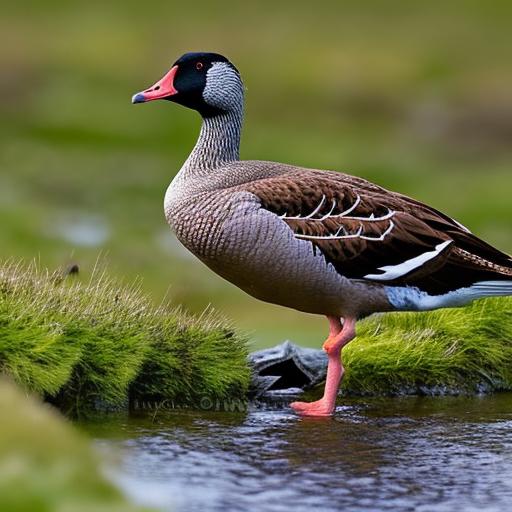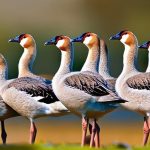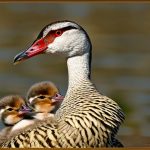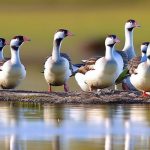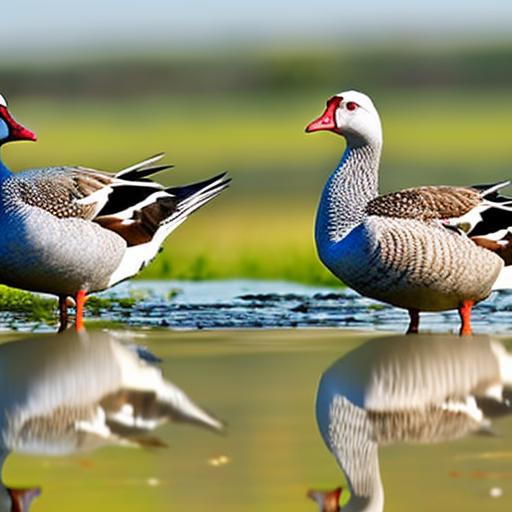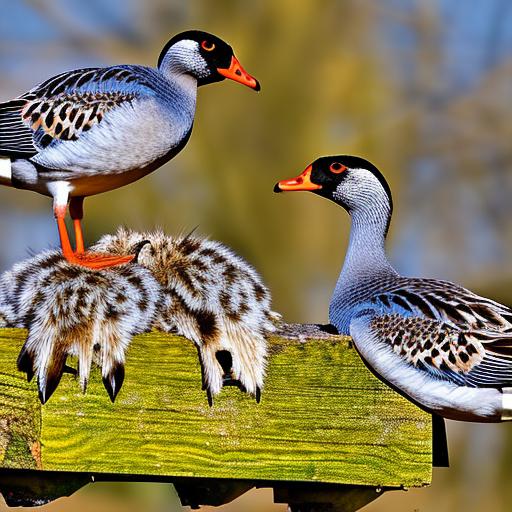Geese breeding season is a crucial time for these majestic birds, as it marks the beginning of new life and the continuation of their species. The breeding season typically occurs in the spring, when the weather is warmer and food sources are more abundant. During this time, geese engage in various behaviors such as mating rituals, nesting, and egg-laying, all of which are essential for the survival of their offspring. Understanding the intricacies of geese breeding season is important for conservation efforts and for gaining insight into the role these birds play in their ecosystems.
Geese breeding season is a time of great activity and significance for these birds. It is a period when they engage in complex behaviors that are essential for the continuation of their species. By delving into the various aspects of geese breeding season, we can gain a deeper understanding of the behaviors and patterns that are crucial for the survival of these birds and their offspring. This knowledge can also help us appreciate the importance of protecting geese and their habitats during this critical time.
Understanding the Behavior of Geese During Breeding Season
During the breeding season, geese exhibit a range of behaviors that are essential for successful reproduction. One of the most notable behaviors is the formation of pair bonds between male and female geese. These pair bonds are often strong and long-lasting, with some geese species forming lifelong partnerships. The formation of pair bonds is crucial for successful mating and raising offspring, as it provides stability and support for both parents.
Another important behavior exhibited by geese during breeding season is territoriality. Male geese are known to be highly territorial during this time, often engaging in aggressive behaviors to defend their nesting sites and mates. This territorial behavior is important for ensuring the safety and security of the nesting area, as well as for establishing dominance within the flock. Understanding these behaviors can provide valuable insights into the social dynamics and interactions of geese during breeding season.
The Role of Mating Rituals in Geese Breeding Season
Mating rituals play a significant role in geese breeding season, as they are essential for successful reproduction. These rituals often involve elaborate displays and vocalizations, which are used to attract mates and establish pair bonds. Mating rituals can vary between different geese species, with some engaging in intricate courtship displays while others rely on vocalizations and physical interactions.
Mating rituals also serve as a way for geese to assess potential mates and ensure genetic compatibility. By engaging in these rituals, geese can determine the fitness and suitability of potential partners, which is important for producing healthy offspring. Understanding the role of mating rituals in geese breeding season can provide valuable insights into the reproductive strategies and social dynamics of these birds.
Nesting and Egg-laying Patterns of Geese
Nesting and egg-laying are crucial aspects of geese breeding season, as they mark the beginning of new life for these birds. Geese typically build their nests in secluded areas near water, such as marshes, lakes, or rivers. The construction of nests is often a collaborative effort between male and female geese, with both parents contributing to the building and maintenance of the nest.
Once the nest is constructed, female geese will lay a clutch of eggs, which they will then incubate for several weeks. The number of eggs laid can vary between different geese species, with some laying as few as 3-5 eggs while others may lay up to 12 eggs. Understanding the nesting and egg-laying patterns of geese is important for conservation efforts, as it can help identify key nesting areas and inform management strategies to protect these sites.
The Importance of Geese Breeding Season in Ecosystems
Geese breeding season plays a crucial role in ecosystems, as it contributes to the overall health and balance of natural habitats. As herbivores, geese play a key role in shaping vegetation communities through their grazing activities. During breeding season, geese often seek out nutrient-rich food sources to support their reproductive efforts, which can have cascading effects on plant communities and nutrient cycling within ecosystems.
Additionally, geese breeding season provides food for a variety of predators and scavengers, which rely on the abundance of eggs and young goslings as a food source. This influx of nutrients can support a diverse array of wildlife within ecosystems, contributing to overall biodiversity and ecological resilience. Understanding the importance of geese breeding season in ecosystems is essential for conservation efforts, as it highlights the interconnectedness of species within natural habitats.
Challenges and Threats to Geese Breeding Season in the UK
Geese breeding season faces a range of challenges and threats in the UK, which can impact the success and survival of these birds. One of the primary challenges is habitat loss and degradation, as urbanization and agricultural expansion continue to encroach on natural wetland areas that are crucial for nesting and raising offspring. This loss of habitat can disrupt traditional nesting sites and lead to increased competition for limited resources.
Another significant threat to geese breeding season in the UK is human disturbance, particularly during nesting and egg-laying periods. Recreational activities such as boating, fishing, and hiking can disrupt nesting sites and cause stress to breeding pairs, leading to decreased reproductive success. Additionally, predation by introduced species such as foxes and mink can pose a significant threat to nesting geese, particularly in areas where natural predators have been extirpated.
Conservation Efforts to Protect Geese During Breeding Season
Conservation efforts to protect geese during breeding season in the UK are crucial for ensuring the survival and success of these birds. One key conservation strategy is the protection and restoration of critical wetland habitats that are essential for nesting and raising offspring. This can involve habitat restoration projects, land acquisition for conservation purposes, and the implementation of management practices to reduce human disturbance.
Another important conservation effort is the monitoring and management of predator populations to reduce predation pressure on nesting geese. This can involve targeted predator control measures in areas where predation is a significant threat, as well as the implementation of predator-proof fencing around key nesting sites. Additionally, public education and outreach programs can help raise awareness about the importance of protecting geese during breeding season and promote responsible recreational activities near nesting areas.
In conclusion, geese breeding season is a critical time for these birds, marked by complex behaviors and reproductive efforts that are essential for their survival. Understanding the intricacies of geese breeding season can provide valuable insights into their role in ecosystems and inform conservation efforts to protect these birds during this crucial time. By addressing the challenges and threats facing geese breeding season in the UK and implementing targeted conservation strategies, we can work towards ensuring the continued success and resilience of these iconic birds in their natural habitats.
Meet Walter, the feathered-friend fanatic of Florida! Nestled in the sunshine state, Walter struts through life with his feathered companions, clucking his way to happiness. With a coop that’s fancier than a five-star hotel, he’s the Don Juan of the chicken world. When he’s not teaching his hens to do the cha-cha, you’ll find him in a heated debate with his prized rooster, Sir Clucks-a-Lot. Walter’s poultry passion is no yolk; he’s the sunny-side-up guy you never knew you needed in your flock of friends!

